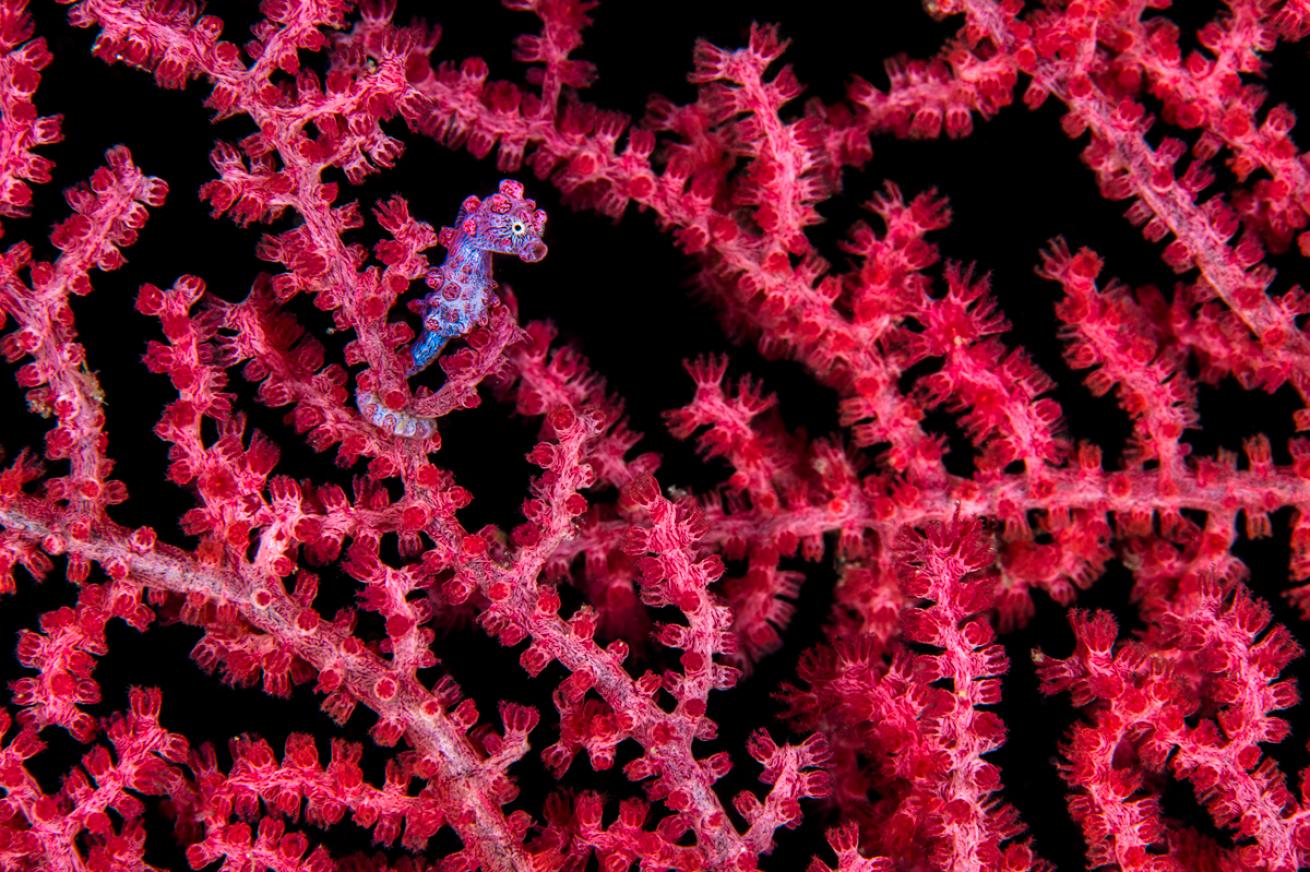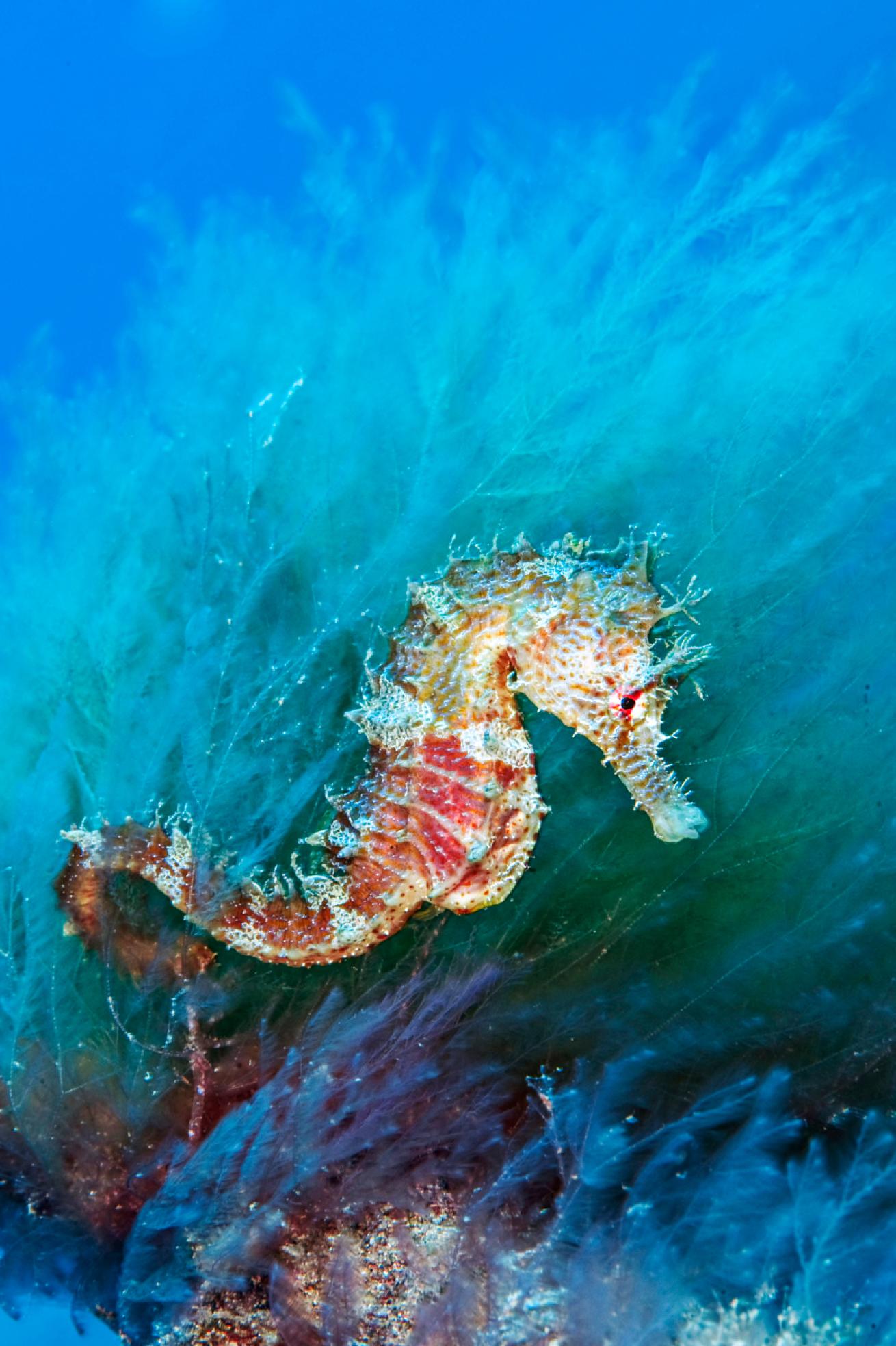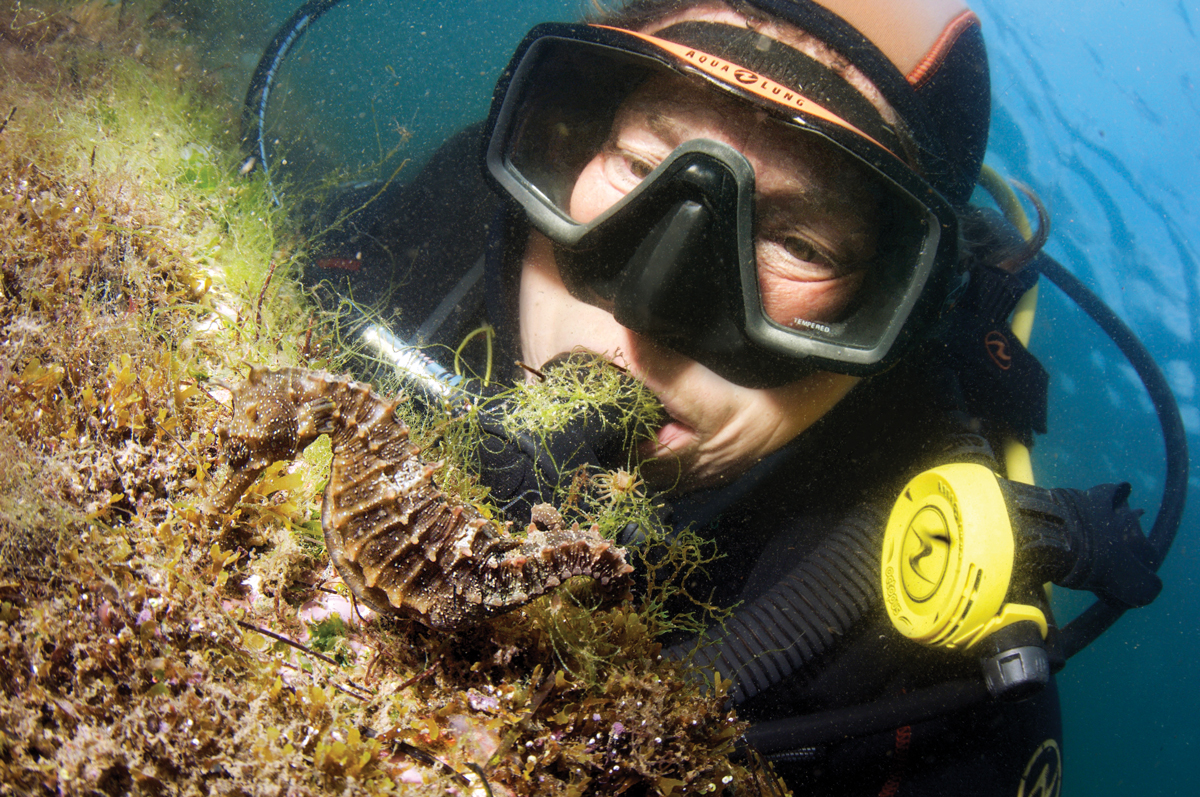How to Take Beautiful Seahorse Photos

Alex MustardDon’t chase magnification. Give pygmies space to demonstrate their size.
They may be small, but they make a big impression. If you are lucky enough to see a seahorse, the memories will last a lifetime. Memories are great, but pictures are even better. However, seahorses are not the most cooperative of models. As secretive, non-swimming fish, they don’t relish being spotted, and usually turn their back on any encounter.
Seahorses survive by remaining hidden, so patience is vital both to find them and to get a pleasing photo. When you do spot one, don’t rush in for the close-up. Take your time and prove you are no threat—increasing your chances of getting near without the seahorse turning away from the camera. A longer focal length macro lens can be helpful to shoot from slightly farther away. Also, a continuous light makes them shy away, but they usually don’t react to flashes—so opt not to use a focus light.
Tip 1: Eye Contact Is Key
Seahorses are shy, so photos with great eye contact stand out. If you have to ask if a picture has good eye contact, it doesn’t! Stay very still and watch the subject through the viewfinder or screen, only taking photos at that moment of peak eye contact. You can sometimes attract their attention by wiggling your pinky above the lens, or tapping your housing with a ring. This won’t get the seahorse to turn its head, but it will get the eyes to lock onto the lens momentarily. However, this only works when your whole body has been motionless for a while and you haven’t been zapping off loads of shots.
Seahorses have their eyes on the sides of their heads, which raises the question of aiming for one eye or two in the picture. For me, whichever composition gives the strongest eye contact is the one to aim for.
Shooting seahorses from the side is the best way to showcase their distinctive shape. When you can get that graphic shape to dominate the frame, your pictures will surely be pleasing. Watching seahorses underwater, you will quickly realize that they don’t often sit there in that classic pose. Usually, when they are holding on with their prehensile tail, their body will be more horizontal. The trick is to time your photographs to capture the best body position. Ideally, you should frame them against a distant background, which will show their shape most clearly, but this often isn’t possible. Try opening the aperture to blur the background and make the animal’s shape pop. The lure of capturing this shape against open water tempts some to lift seahorses up into the water for their photos. I wish there were no need to say it, but since these images persist: You should not be touching and moving marine life for the sake of a picture.
Tip 2: Tiny Treasures
The cutest members of the seahorse family are the pygmies, which are not only tiny, but often color- and texture-coordinated with their homes. They are highly photogenic and popular. Since they are small, many photographers feel that the only measure of a pygmy picture is magnification. These shots are certainly impressive, but they always seem to need the photographer to tell everyone, “It was only the size of a grain of rice,” to get the oohs and aahs. Shooting them small in the frame with an off-center composition gives a much better impression of their tiny size—emphasizing their diminutive stature.

Alex MustardGood eye contact and a recognizable body shape make strong shots.
As with other seahorses, the route to great pygmy poses is winning their trust and timing, rather than taking tons of shots. Typically you’ll be shooting in a group with other photographers, which means some waiting. Use that time to prepare, get accessories and lighting in place and rehearse exposures so you are completely ready.
The two most popular species of pygmy seahorse live in sea fans. Sea fans thrive in areas of current, so there will always be dives when the conditions are too challenging to shoot such tiny creatures and dives when they are hiding. That said, some current is beneficial, as it usually means the fan’s polyps will be out on display. Most pygmy photos show fans with the polyps retracted, so getting them in full bloom will make your shots stand out.
Sea fans regularly have their polyps withdrawn naturally, but they also disappear when photographers or dive guides touch them. I’ve seen careless photographers bump their camera into them and guides touch them in an attempt to get a better pygmy pose. Withdrawn polyps don’t always signal foul play, but seeing them out shows the viewer that the image has been taken ethically.
Seahorses are amazing fish and fantastic subjects, but being slow and secretive, they are perhaps more easily disturbed by the careless photographer. The good news is that the best shots are a reward for winning their trust. We should celebrate and share their wonder in our pictures, and demonstrate in our photos that we’ve gone about our work correctly.











